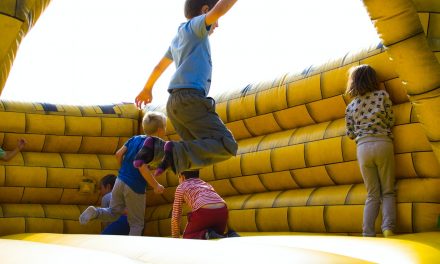Is there anything scarier than taking your little ones to a hypermarket or supermarket shopping with your little ones? toy aisles, candy at the checkout counter, car carts that can’t be steered – exhausting to think about, but enough to make you order pizza for dinner again.
But sometimes, it’s inevitable to go shopping with your kids. While this may never be a pleasant experience, there are ways to stop the retail-induced crash. Read on for 12 tips on how to make your child’s shopping experience go smoothly.

Before You Shop
Before you grab your keys and shopping list and start your big adventure, it’s crucial to do some preparation to ensure that the experience is a peaceful one. Here are some tips to keep in mind.
Forecasting and evaluation
Before you go somewhere, think about whether it’s a tricky environment for your child. What will they experience in terms of the level of seduction and sensory input, and will she have to follow a lot of rules?
Keep in mind that each tantrum is a series of events that provide several points for intervention or prevention. If you anticipate specific challenges your child may face (e.g., cupcakes displayed in a bakery aisle), you may be able to stop them before they lose their temper.
Build rewards
Contrary to what you might think, it’s okay to build rewards into your shopping trip, as long as the expectations surrounding it are clear: “If you stay with me and use your inner voice throughout our time at the supermarket, we can’t do it if I need to give you more than two warnings.” ”
Remember that the difference between a reward and a bribe is important: a reward is promised in advance of a possible negative behavior so that you don’t inadvertently reinforce it. On the other hand, bribery occurs as soon as unwelcome behavior, such as tantrums, begins, and sends the message that yelling/screaming/crying is effective in getting what you want.
Don’t Cram into the Last Thing
I don’t care how much you need a new light bulb. If you drop your preschooler to the pharmacy before dinner after a busy afternoon, your family will get along better by candlelight. It’s better to remove something from your to-do list for the day than to try to do too much and inevitably end up in the nightmare “last stop.”
Modern technology brings victory (sometimes)
If you live in an area where it’s possible and financially viable for your family, don’t be afraid to rely on the wonders of the internet and order what you need online to make life easier.
However, I don’t recommend doing this every time you run out of paper towels or breakfast cereals; we can’t emulate (and therefore teach) that avoidance is always possible or better.
Become a Team with Your Child
This paragraph is very, very important. Your child will perform best when they feel that you “understand” them, and even more so in tricky situations. Your child needs to know that you are there for them and not just waiting for the proverbial $#%* to strike.
One way to help make sure you’re handling things as a team is to give your shopping trip a name that evokes fun and positivity (Mom and Aaron’s adventures at Costco, Jonas’s trip to the supermarket). Feel free to get involved – come up with a song or cheer that you can sing along with.

After Arriving at the Store
Okay, you’ve done your preparations, and you’re in the right frame of mind to make this trip to the grocery store a success. But what happens once you get there? What if your child starts throwing tantrums? Here are some ideas for staying calm.
Get your child involved
It sounds simple because, at least in theory, it does. A tricky environment is a great place to talk to your child about their interests. Make sure to be specific, and ask your child to tell you again their favorite joke, or the Paw Patrol episode they watched over the weekend, or what they want to do next Halloween (they always know!).
Play the game of “I bet …”.
Toddlers and preschoolers go crazy when you “bet” that they can’t do something. They rise to the challenge almost every time. Try these:
- “I bet you can’t make it all the way down this aisle. ”
- “I bet you don’t know what color it is (pointing at something). ”
- “I bet you can’t count all the contents of our shopping cart by now. ”
- “I bet you can’t name everyone in this room. ”
Work for your children
If your child feels like a helper for you – and ideally really embraces the role – they will most likely not lose their temper.
Ask your child to help you take items off the shelf, put items in the shopping cart, or put items in a shopping bag. If you don’t think about a job for a while, find one.
Don’t push it
Remember: leaving is an option. If you feel like you’re walking on thin ice and your kids have the ability to hold it together, then ditching the boat (and your cart) is fine. If you do leave early before or during an emotional breakdown, it is not a failure for either you or your child.
On the Way Home
You’ve made it through the hardest part!Hopefully, your child will be able to stay calm and that you haven’t forgotten anything on your list. But there’s one more stop on this trip: home. Read on for tips on how to stay calm until you go home.
Pat yourself (and your child) on the back
It’s true. You (both) did it. It doesn’t matter how things go. If things don’t go as smoothly as you’d hope, take the opportunity to reflect. Think about what you can do differently next time (don’t blame yourself) and do something to rebuild the bond between you and your child.
Let your child know how well they are doing and be specific. Try saying something like:
- “I noticed how well you kept your cool when we were in line. ”
- “Thank you for traveling with me today; you are very polite and helpful!”
- “I know you’re sad that you didn’t get that candy, but I’m really proud that you handled it well!”
Deliver on any rewards you promise
That is, let’s say your child keeps his promise.
Exhale
Take a deep breath and remember that no matter how frustrating or exhausting it can be to take the little ones out in public, every trip is a great opportunity for you to practice patience and your child to learn social skills.








